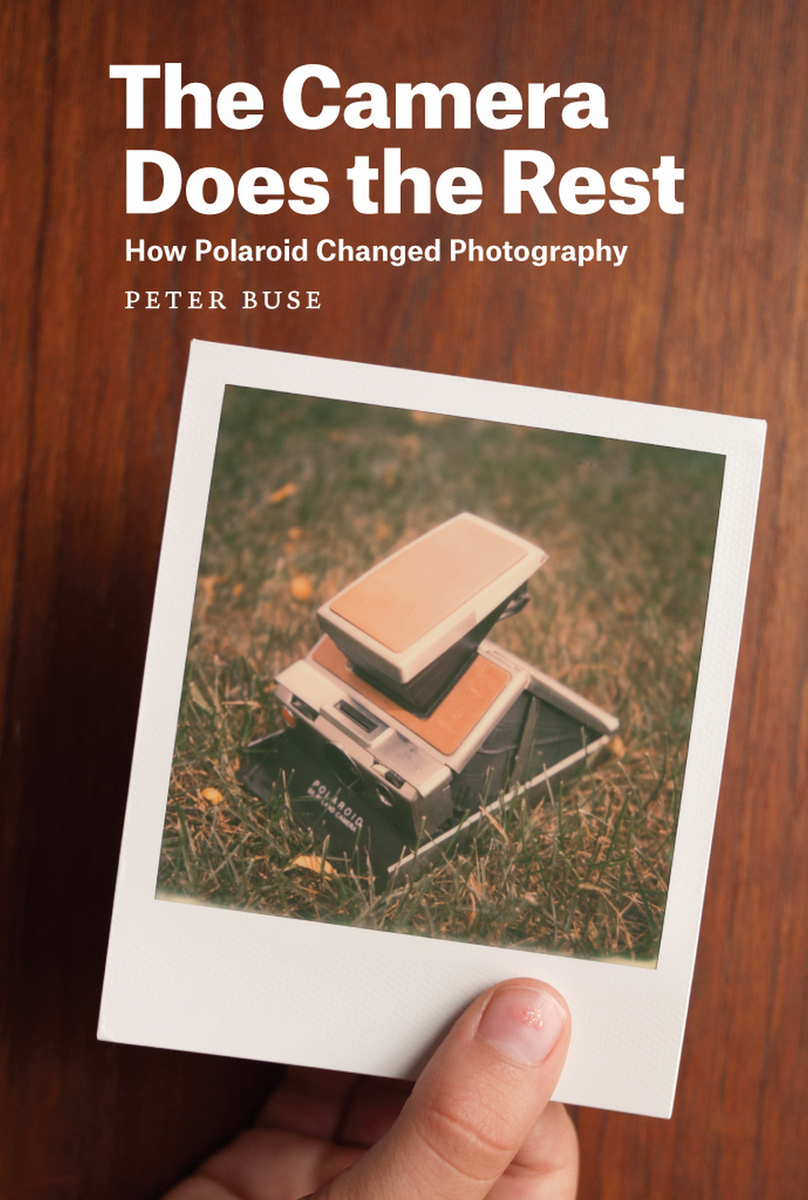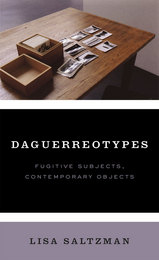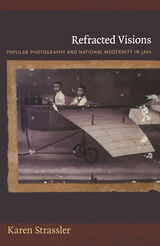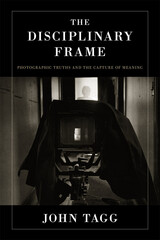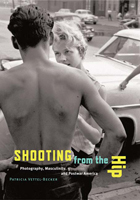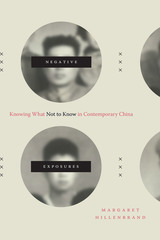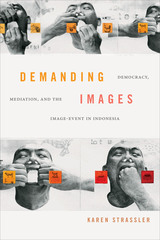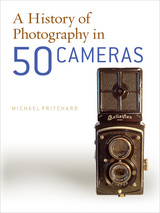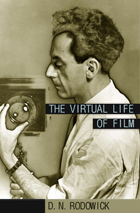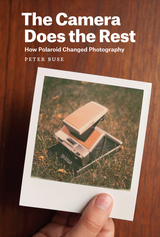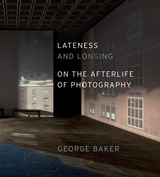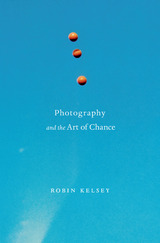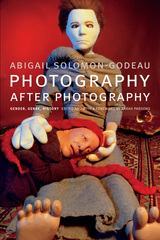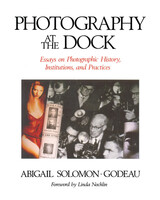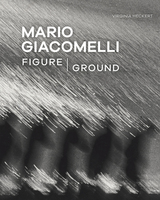"Buse gives us an account of the experience of the Polaroid camera and an extended analysis of its distinctive photos. Most striking is how he traces its presence in novels, advertisements, and films, proving its iconic status in our culture despite its recent demise. The Camera Does the Rest will be of interest to anyone involved in photography, from students to visual and cultural study scholars to members of camera clubs."
— Geoffrey Batchen, author of Forget Me Not: Photography and Remembrance
"In this engaging and wide-ranging account, Buse gets at what made Polaroid special: as a technological triumph, an array of popular products, a generator of social rituals, and harbinger of a digital era in which everyone is a maker and consumer of instant photographs. Buse’s approach obeys the guideline he cites from a 1981 Polaroid newsletter—'stay close to your subjects'—with exemplary results. His survey of the practices, materials, and legacy of Polaroid photography will serve as a model for cultural histories of imaging technologies."
— Britt Salvesen, Los Angeles County Museum of Art
“In The Camera Does the Rest, Buse brings his gift for in-depth reporting and insightful commentary to this convincing argument on the cultural and social impact of the Polaroid brand. Buse helps us answer the questions on the minds of many ever since 2008 when the company ceased production on instant cameras and film. What was Polaroid? Was it the magnum opus of a brilliant inventor? The results of decades of hard work by a team of experts? A mere toy? A party camera? A covert device for making home pornography? An invitation to artists to experiment? A sophisticated tool for professional photographers? A gateway to the world of digital imaging? A camera for the masses to produce trillions of snapshots? As Buse shows, the answer to each of these questions is a resounding YES.”
— Mary-Kay Lombino, Frances Lehman Loeb Art Center
“In a series of brilliantly executed snapshots, Buse carefully but quickly reveals (in much the same manner as the actual photographs he writes about) a remarkable new history of Polaroid photography. Accessible, engaging, and often eloquent, Buse offers new insights and challenges conventional notions from ‘what makes a Polaroid a Polaroid’ to the cause of the company’s demise. It is a book that will make you see anew the story of a beloved American company and its influence on modern culture.”
— Deborah G. Douglas, Massachusetts Institute of Technology Museum
"As Buse argues in his smart and engaging The Camera Does the Rest: How Polaroid Changed Photography, amateur picture taking was originally conceived of as 'a form of play'....Looking at a Polaroid is unlike looking at any other picture because a Polaroid has that which a photograph is supposed to lack: an aura. Each shot is singular, unrepeatable; each life, a story; each image, a measure of hungry, sucking time."
— Harper's
"Mining the Polaroid archives in the Baker Library Historical Collections, Harvard Business School, Buse researches how Polaroid cameras were marketed, the aesthetics of the Polaroid print, and the social rituals associated with owning and taking instant images. Other books detail the life of Polaroid’s founder Edwin H. Land and examine the company’s distinctive milieu; this scholarly cultural history is distinguished by Buse’s background in performance studies. The author is less interested in studying pictures than he is in thinking about the performative moment of taking and sharing instant photos, an aspect unique to Polaroid—until digital photography came into existence—an innovation that led to Polaroid’s demise but was also facilitated by instant film. For readers interested in photography history, the cultural history of technology, innovation, and business history."
— Library Journal
"Scholarly yet joyful.”
— Wall Street Journal
"Polaroid is a technology whose sun has set. It casts long shadows nevertheless, and in this afterglow Buse pursues two lines of inquiry, both fascinating....One may debate the relative powers of the photograph when treated as a memento, or as a tangible object, or as a social act—and the history of the company reads like a précis of popular image technology in the 20th century. But, as Buse demonstrates, in being so different from so many other kinds of photographs, the Polaroid helps to reveal what photography has been, and what it does."
— The Nation
"The Camera Does the Rest is a well-researched and thorough history of Polaroid photography, covering both the technical aspects of the cameras and their film, and the influence of this technology on society. It’s generously illustrated but is by no means a coffee-table book. Instead, it’s a serious history and analysis of the Polaroid phenomenon, and each illustration is included to make some point.”
— PopMatters
"
The Camera Does the Rest takes a deep dive into Polaroid’s corporate archives to reveal the company’s transformative influence on the photographic process. This book covers all of the cultural perceptions and scientific discoveries that made Polaroid something very special and leaves us with a clear sense of its lost pleasures, too. For Buse, Polaroid is not just an object of nostalgia, it is a catalyst undeniably linked to the massive changes we've seen in social rituals and imaging technology in our lifetime."
— American Photo
“The Camera Does the Rest is a fascinating study of a unique product and the serious and quirky uses it saw. It will interest camera buffs or those that enjoy an unusual story."
— Galveston County Daily News
"The Camera Does the Rest is the best kind of cultural study, and refreshingly jargon-free. Buse steers a course between the mockers and admirers, and brings concision, shape and clarity to a complex subject through his skillful plundering of the enormous Polaroid archive in Harvard Business School's Baker Library. This well-illustrated, handsomely produced book is rich in facts, speculation, and anecdotes."
— Times Literary Supplement
"Critic and theorist Buse’s fine examination of the cultural history of Polaroid technology, The Camera Does the Rest, considers the societal forces at work as the company succeeded and failed, from the launch of its first camera in 1948 to its existence today. Scholarly and philosophical, the book is an intriguing read, although not a casual one. Buse’s answers offer insights into our interactions with technologies over time, as well as new ways of understanding the evolution of contemporary shutterbugs."
— American Scientist
"Buse poses a linked series of questions, and the answers and reflections about the industrial, social, cultural, and artistic responses to Polaroid tell its unique history from its rise to its fall. His intelligent, thoughtful, well-written essays provide the framework for an excellent overview of the subject."
— Choice
"The Camera Does the Rest has a richness of detail and language. Buse turns to myriad unconventional but vivid sources in his effort to resurrect just what it felt like to make, pose for, and view Polaroid images. This experience of instant photography is his true focus, and he addresses it from multiple, new, persuasive perspectives. In so doing, he makes the magic of the Polaroid moment vivid for those readers for whom that era is now a faint memory and for those readers too young to have experienced it. To my knowledge, the book has no peers in evoking the lost moments of Polaroid photography. While this alone makes it a mighty contribution to the study of visual culture, I would suggest that, in addition, the archeological approach Buse takes to his topic serves as an excellent model for scholars seeking in its archaeological approach, how to recuperate the novelty experienced when now familiar technologies were once new."
— Technology and Culture
"This book seems to be a perfect gift to all photography lovers who demand excellent academic research; its style is light and approachable and its thesis, well-argued, providing more than substantial information on this charming photo technique."
— Leonardo
"Drawing on unprecedented access to the archives of the Polaroid Corporation, Buse guides the reader through six thematic chapters which all break with the stereotypes [of Polaroid photography]. Richly illustrated, the book brings to light the multifaceted applications of Polaroid technology, including the diverse photographic practices that evolved, the different film and print formats, and various kinds of instant cameras. By doing so, the book draws a cultural history of the photographic technology. . . .The book is … a valuable read for academics as well as those interested in specific camera technologies, their reception, and the companies behind such technologies. Far from being just an account of technological innovation, the book reveals the many shapes Polaroid took in the late twentieth century and challenges the concept of Polaroid as simply a snapshot company. By doing so, Buse’s account not only troubles the singular picture we have of Polaroid, but contributes to the burgeoning field of late twentieth-century analogue photographic practices."
— History of Photography
